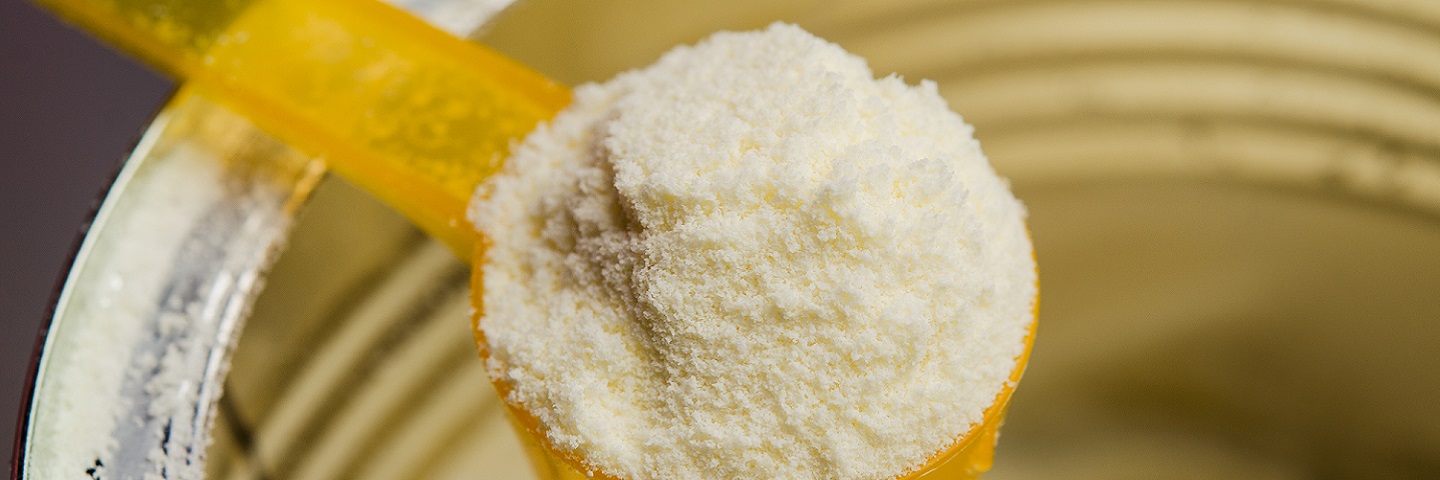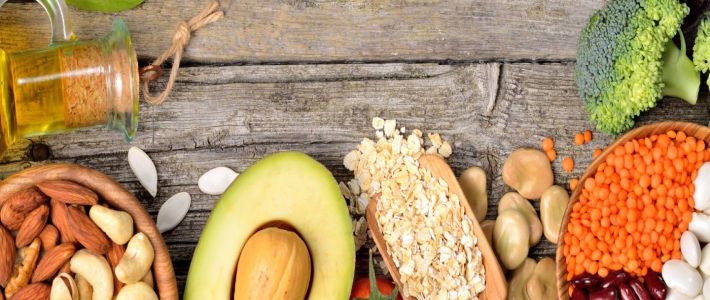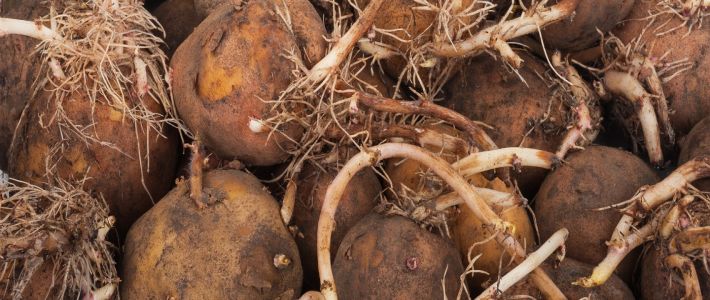
Visit our other sites
-
Fapas - Proficiency Testing
Globally recognised provider of proficiency tests, running over 400 tests annually across an extensive range of matrices and analytes
-
Great Crested Newts Testing
A single sample taken by an ecologist at any time during the newt breeding season can determine their presence or absence, saving you time and money

Method Used
Multiple
LOD (limit of detection)
Typically 0.01 mg/kg or lower
Accreditation
ISO 17025
Pesticides are typically used properly by food producers but if used incorrectly, residues may be found at unsafe levels within foodstuffs, with potentially significant and harmful effects for consumers. Infants are considered to be at greater risk to harmful effects of pesticide residues in food. These concerns may be particularly relevant for the developing bodies and central nervous system. In addition, infants have a higher food intake compared to adults relative to their body weight. This also increases the risk of higher exposure. For this reason, EU has set specific rules on the presence of pesticides residues in baby foods to minimise or eliminate this risk. Rigorous, ongoing safety assessments are undertaken by regulatory bodies to be sure that any pesticide residues remaining in food are at levels which are not harmful to people.
'Red List' of Pesticides
| Pesticide | Pesticide | Pesticide |
|---|---|---|
| aldrin | ethoprophos | heptachlor |
| cadusafos | fensulfothion | heptachlor epoxide (cis) |
| demeton-S-methyl | fensulfothion-oxon | heptachlor epoxide (trans) |
| demeton-S-methyl sulphone | fensulfothion-oxon-sulfone | hexachlorobenzene |
| demeton-S-methyl sulphoxide | fensulfothion-sulfone | nitrofen |
| dimethoate | fentin acetate | omethoate |
| disulfoton | fipronil | terbufos |
| disulfoton sulphone | fipronil de-sulfinyl | terbufos sulfone |
| disulfoton sulphoxide | fipronil-sulfone | terbufos sulfoxide |
| endrin |
haloxyfop (free acid) | dieldrin |
Fera food safety experts can identify (screen), and also quantify, residues within your food sample using state of the art GC-MS/MS and LC-MS/MS equipment. These data can be vital to ensure your products are fit for purpose, provide strong evidence to regulators and consumers that your food products are safe, and demonstrate that any residues present are below regulatory limits, or Maximum Residue Levels (MRLs).
Fera is the UK National Reference Laboratory for the analyses of pesticide residues with leading experts in the field carrying out tests to verify that food meets regulatory requirements and ensuring consumers are not exposed to unacceptable levels of pesticide residues.
Our LC and GC triple quadrupole mass spectrometry based multi residue methods are highly efficient, with over 400 pesticides included in routine analytical screening. In addition, single residue method for propylenethiourea (PTU) is offered as a part of this package for fruit and vegetable-based baby food samples. PTU is a marker compound that indicates use of propineb. Fera experts also recommend analysis of chlormequat in cereal based baby food samples, due to a higher risk of non-compliance.
These methods are designed to meet the requirements for regulations set to protect younger consumers from exposure to certain pesticides. EU regulations 1999/50/EC, 2006/141/EC, 2006/125/EC and EU 2016/127 set specific rules for pesticides residues in baby foods. These regulations aim to ensure that baby foods should contain no detectable levels of certain very toxic pesticide residues, typically 0.003m/kg (identified in red when you download the full list of pesticides - link below). In addition, the regulations also require that food products consumed by babies should not contain any other pesticide residues at or above 0.01 mg/kg level.
Our fast turnaround times (1-10 working days) will ensure that results are readily available and you can quickly address any potential issues. We require only a 100g sample of your foodstuffs to ensure accurate results, but a larger sample (typically 1kg) may be required to comply with some EU and Codex regulations.
For the full list of pesticides we can test for see below or click the link below:
Other Pesticides we can test for:
2,4-D, 2,4-DB, 2-phenylphenol, 6-benzylaminopurine, abamectin, acephate, acetamiprid, acetochlor, acibenzolar-S-methyl, aclonifen, acrinathrin, alachlor, aldicarb, aldicarb sulphone, aldicarb sulphoxide, allethrin, ametoctradin, amidosulfuron, asulam, atrazine, azinphos-ethyl, azinphos-methyl, azoxystrobin, BAC 10, BAC 12, BAC 14, BAC 16, benalaxyl, bendiocarb, benthiavalicarb-isopropyl, bifenox, bifenthrin, biphenyl, bispyribac-sodium, bitertanol, bixafen, boscalid, bromophos-ethyl, bromopropylate, bromoxynil, bromuconazol, bupirimate, buprofezin, butachlor, butocarboxim, butocarboxim sulphoxide, butoxycarboxim, captan BD (THPI), carbaryl, carbendazim, carbetamide, carbofuran, carbofuran (3-hydroxy), carboxin, chlorantraniliprole, chlorbufam, chlordane (cis), chlordane (trans), chlorfenapyr, chlorfenvinphos, chlorfuazuron, chloridazon, chlorobenzilate, chlorothalonil, chlorpropham, chlorpyrifos, chlorpyrifos-methyl, chlorthal-dimethyl, chlortoluron, chlozolinate, chromafenozide, clethodim, clofentezine, clomazone, clothianidin, coumaphos, cyanazine, cyazofamid, cycloate, cycloxydim, cyflufenamid, cyfluthrin, cyhalofop-butyl, cyhalothrin-lambda, cymoxanil, cypermethrin, cyproconazole, cyprodinil, cyromazine, DDAC, DDD-pp, DDE-pp, DDT-op, DDT-pp, deltamethrin, desmedipham, diafenthiuron, diazinon, dicamba, dichlobenil, dichlofluanid, dichlorprop, dichlorvos, diclobutrazol, dicloran, dicofol, dicrotophos, diethofencarb, difenoconazole, diflubenzuron, diflufenican, dimethenamid, dimethomorph, dimoxystrobin, diniconazole, dinotefuran, diphenylamine, diuron, DMF, DMPF, DMSA, DMST, dodine, emamectin benzoate, endosulfan (I), endosulfan (II), endosulfan-sulphate, EPN, epoxiconazole, EPTC, ethiofencarb, ethiofencarb sulphone, ethiofencarb sulphoxide, ethion, ethirimol, ethofumesate, etofenprox, etoxazole, etridiazole, etrimfos, famoxadone, fenamidone, fenamiphos, fenamiphos sulphone, fenamiphos sulphoxide, fenarimol, fenazaquin, fenbuconazole, fenbutatin oxide, fenhexamid, fenitrothion, fenoxycarb, fenpropathrin, fenpropidin, fenpropimorph, fenpyrazamine, fenpyroximate, fenthion, fenthion sulphone, fenthion sulphoxide, fenvalerate, flonicamid, fluazifop (free acid), fluazifop-P-butyl, fluazinam, flubendiamide, flucythrinate, fludioxonil, flufenacet, flufenoxuron, fluometuron, fluopicolide, fluopyram, fluoxastrobin, fluquinconazole, flurochloridone, fluroxypyr, flusilazole, flutolanil, flutriafol, fluvalinate, fluxapyroxad, folpet BD (phthalamide), fonofos, formetanate-HCl, formothion, fosthiazate, furalaxyl, furathiocarb, furmecyclox, halofenozide, halosulfuron-methyl, HCH-alpha, HCH-beta, HCH-gamma, heptenophos, hexaconazole, hexazinone, hexythiazox, imazalil, imazaquin, imidacloprid, indoxacarb, ioxynil, iprodione, iprovalicarb, isazofos, isocarbofos, isofenphos, isofenphos-methyl, isoprocarb, isoprothiolane, isoproturon, isopyrazam, isoxaben, isoxaflutole, kresoxim-methyl, lenacil, linuron, lufenuron, malaoxon, malathion, mandipropamid, MCPA, MCPB, mecarbam, mepanipyrim, mephosfolan, mepronil, mesosulfuron-methyl, metaflumizone, metalaxyl, metamitron, metazachlor, metconazole, methabenzthiazuron, methacrifos, methamidophos, methidathion, methiocarb, methiocarb sulfoxide, methiocarb sulphone, methomyl, methoxychlor, methoxyfenozide, metobromuron, metolachlor, metolcarb, metosulam, metoxuron, metrafenone, metribuzin, metsulfuron-methyl, mevinphos, molinate, monocrotophos, monolinuron, monuron, myclobutanil, napropamide, nitenpyram, nitrothal-isopropyl, novaluron, nuarimol, ofurace, oxadiargyl, oxadiazon, oxadixyl, oxamyl, oxasulfuron, oxychlordane, oxyfluorfen, paclobutrazol, paraoxon-methyl, parathion-ethyl, parathion-methyl, penconazole, pencycuron, pendimethalin, penflufen, pentachloroanaline, pentanochlor, penthiopyrad, permethrin, phenmedipham, phenthoate, phorate, phorate sulphone, phorate sulphoxide, phosalone, phosmet, phosphamidon, phoxim, picolinafen, picoxystrobin, piperonyl butoxide, pirimicarb, pirimicarb-desmethyl, pirimiphos-ethyl, pirimiphos-methyl, prochloraz, procymidone, profenofos, promecarb, prometryn, propachlor, propamocarb (free base), propanil, propaquizafop, propargite, propetamphos, propham, propiconazole, propoxur, propyzamide, proquinazid, prosulfocarb, prosulfuron, prothioconazole-desthio, prothiofos, pymetrozine, pyraclostrobin, pyrazophos, pyrethrins, pyridaben, pyridalyl, pyridaphenthion, pyrifenox, pyrimethanil, pyriproxyfen, quassia, quinalphos, quinmerac, quinoclamine, quinomethionate, quinoxyfen, quintozene, quizalofop-p, resmethrin, rimsulfuron, rotenone, simazine, spinetroram, spinosad, spirodiclofen, spiromesifen, spirotetramat, spirotetramat-enol, spiroxamine, sulcotrione, sulfoxaflor, tebuconazole, tebufenozide, tebufenpyrad, tebuthiuron, tecnazene, teflubenzuron, tefluthrin, tepraloxydim, terbuthylazine, terbutryn, tetrachlorvinphos, tetraconazole, tetradifon, tetramethrin, TFNA, TFNG, thiabendazole, thiacloprid, thiamethoxam, thiodicarb, thiophanate-methyl, tolclofos-methyl, tolfenpyrad, tolylfluanid, triadimefon, triadimenol, triallate, triasulfuron, triazamate acid, triazophos, triclopyr, tricyclazole, trifloxystrobin, triflumizole, triflumuron, trifluralin, triforine, triticonazole, vinclozolin, zoxamide
Please contact us to discuss volume discounts.
Proficiency Testing - Pesticide Residues in Infant Formula (inc. Red List)
Infant Food Multi Residue Method (MRM) Pesticide Suite
Add Samples
Your Current Samples
Please review your sample(s). Additional sample charges may apply where applicable.
There are no samples associated with this product at this time

Copyright © 2025 Fera Science Limited (“Fera”). All rights reserved.
For further information about how Fera uses any personal data collected from you, please see our Privacy Notice at www.fera.co.uk/privacy-policy.




